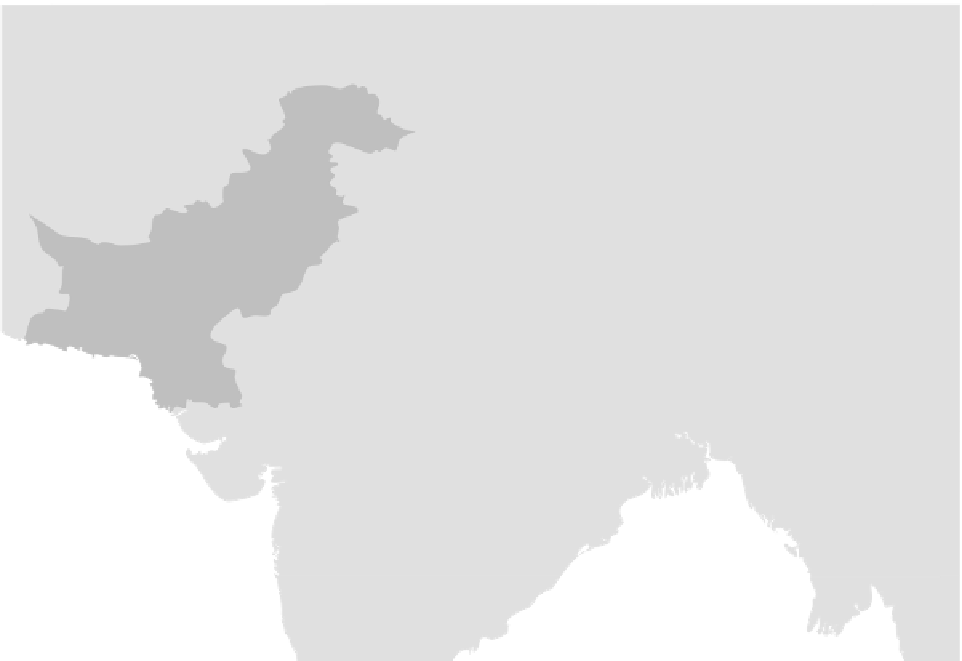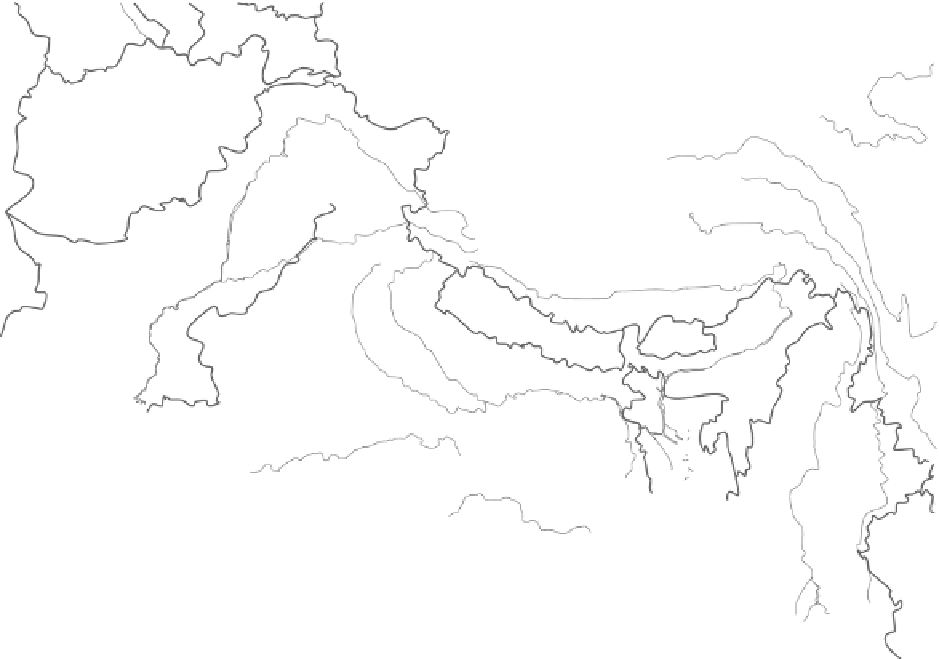Geography Reference
In-Depth Information
Kabul
JAMMU &
KASHMIR
CHINA
(Tibet)
Islamabad
AFGHANISTAN
IRAN
BHUTAN
Delhi
SIKKIM
Thimpu
Kathmandu
Dhaka
Formerly
West Pakistan
INDIA
MYANMAR
Arabian Sea
BANGLADESH
Formerly
East Pakistan
0
0
250
500 mi
Bay of Bengal
250
500 km
Figure 7-1
Northern South Asia. The political complexity of this region is compounded by its rugged physical geography .
Sindhi ones in Hyderabad. In the 1970s, some of
Karachi' s Urdu-speaking Muhajirs, post-partition
Muslim migrants from India, demanded equal rep-
resentation in government even though they were a
minority population. Others agitated for a separate
state.
These incidents epitomize the sense of depriva-
tion felt by Sindhi-speaking leaders and the emerg-
ing middle class. A Sindhi Language Authority was
established in 1990. Language still fuels violence in
Sind and elsewhere.
Several other languages are spoken, with the
greatest diversity in mountainous regions. Pashto
and Baluchi belong to the Iranian branch of the
Indo-European language family . Sindhi, Urdu, and
Punjabi belong to the Indic branch. Brahui is a
Dravidian language. Balti is a Sino-Tibetan
language.
Language and Nationalism
Pakistan (formerly West Pakistan) has reaped the
consequences of lacking linguistic cohesion. About
two-thirds of the population speaks Punjabi. Punjab
is the most economically productive province and
contains the nation' is capital, Islamabad. Sindhi is
spoken by about 12 percent, mostly in Pakistan' s
second industrial province of Sind. Urdu is spoken
by only 8 percent, yet it was proclaimed the na-
tional language. Along with English, it is the lan-
guage of the elite and government. Urdu-speakers
are concentrated in cities, especially Karachi. Lan-
guage riots broke out in Sind in the 1950s when
university students were forbidden to write their es-
say questions in Sindhi. More riots occurred in
1965 when Urdu signs and radio programs replaced



















































Search WWH ::

Custom Search